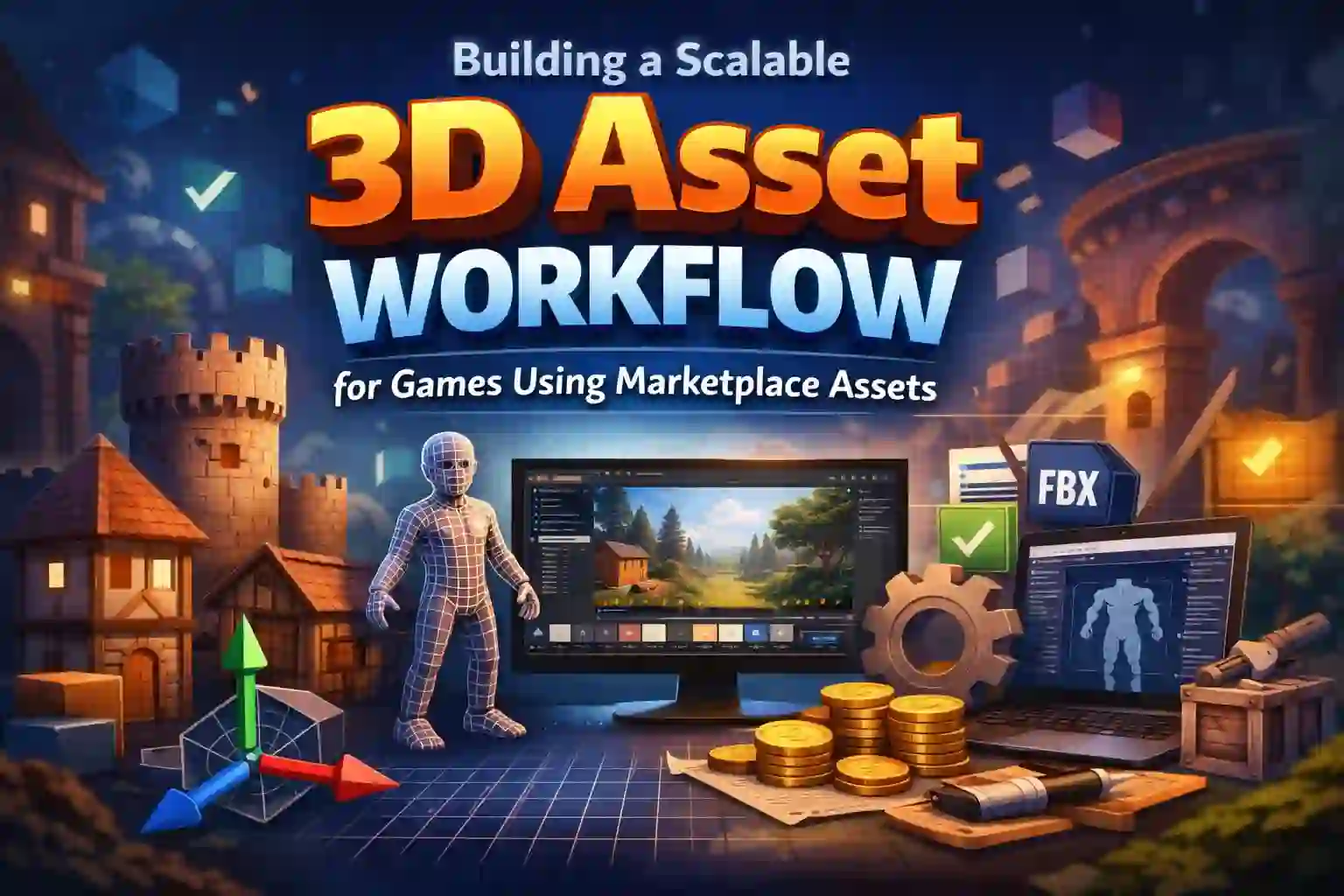Web Based Gaming Unleashed: How WebGPU Powers Next-Gen Browser Games
by Animatics Asset Store in Blog on July 14, 2025Web based gaming is transforming fast. Thanks to WebGPU, browser games now rival console and PC experiences. This new technology unlocks smoother graphics, faster performance, and immersive gameplay right in your browser. No downloads or pricey hardware needed. Let’s dive into how WebGPU is revolutionizing web-based gaming and why it’s a game-changer for developers and players alike.
What is WebGPU?
WebGPU is a cutting-edge web standard. It gives browsers direct access to your device’s graphics processing unit (GPU). Unlike its predecessor, WebGL, WebGPU taps into modern GPU features like Vulkan, Metal, and DirectX 12. This means sharper visuals and faster rendering for web-based gaming. According to Google, WebGPU reduces JavaScript workload and boosts machine learning tasks by over three times compared to WebGL.
Think of WebGPU as a bridge. It connects web apps to your computer’s GPU power. Developers can now create complex 3D games that run smoothly in Chrome, Edge, or Safari. As of July 2025, WebGPU is supported on Chrome 113 and above, macOS, Windows, and ChromeOS, with plans to expand to Firefox, Linux, and Android.
Why WebGPU Matters for Web Based Gaming
Web-based gaming used to mean simple 2D games. Think Flash-based puzzles from the 2000s. But WebGPU changes that. It supports advanced features like compute shaders, ray tracing, and real-time lighting. These tools let developers build visually stunning games. For example, PlayCanvas uses WebGPU to create 3D environments with dynamic shadows and responsive gameplay.
Players benefit too. Web-based gaming is now more accessible. You don’t need a gaming console or high-end PC. Just open a browser and play. Over 1 billion people play browser games globally, and WebGPU makes these games look and feel like native apps.
Smoother Performance
WebGPU optimizes how browsers talk to GPUs. It reduces lag and improves frame rates. This is key for fast-paced games like shooters or racing titles. For instance, WebGPU’s compute shaders allow real-time physics simulations, making gameplay feel alive. Early tests show WebGPU delivers up to 30% faster rendering than WebGL for complex scenes.
Cross-Platform Power
WebGPU works across devices. Whether you’re on a Windows laptop, Mac, or Chromebook, games run consistently. Developers write one version of a game, and it works everywhere. This cuts development time and costs. It also means players enjoy the same experience on any device.
The Role of Low Poly 3D Assets in Web-Based Gaming
Creating great browser games requires optimized assets. Low poly 3D assets are perfect for this. They use fewer polygons, which reduces strain on browsers. This keeps games running smoothly, even on low-end devices. Platforms like itch.io offer thousands of low poly assets, from characters to environments, ideal for web-based gaming.
Animatics assets store also shine here. They provide high-quality low poly 3D models tailored for web games. These assets balance visual appeal with performance. For example, a low poly castle from such a store can look detailed but won’t slow down your browser. Developers can find everything from medieval buildings to sci-fi props, making it easier to craft immersive worlds without overloading the GPU.
How WebGPU Enhances Game Development
WebGPU empowers developers in exciting ways. It simplifies coding for complex graphics. With WebGL, developers faced limitations like poor multi-threading support. WebGPU fixes this. It allows parallel processing, which speeds up tasks like rendering large landscapes or AI-driven characters.
Game engines are jumping on board. Unity is testing WebGPU support in its 2023.2 version. Cocos and PlayCanvas already use WebGPU for advanced effects like bloom and reflections. These features were once exclusive to desktop games. Now, they’re possible in browsers.
Faster Development Cycles
WebGPU’s pipeline system streamlines game creation. Developers set up render pipelines with vertex and fragment shaders. This setup handles tasks like lighting and texture mapping efficiently. For example, Cocos uses WebGPU’s RenderGraph to optimize rendering, cutting down on redundant processes.
Accessibility for Indie Developers
Indie developers love web-based gaming. Why? It skips app store fees. Platforms like Steam charge up to 30% per sale. Web games bypass this, letting developers keep more revenue. Plus, WebGPU’s open standard means anyone can experiment with it. Tools like Three.js make it easy to start building 3D games.
Challenges and the Future of WebGPU
WebGPU isn’t perfect yet. It’s only supported on certain browsers, like Chrome and Edge. Firefox and Safari are catching up, but full adoption will take time. Also, porting existing games to WebGPU can be complex. Developers may need to rewrite parts of their code to leverage WebGPU’s features.
Still, the future is bright. By 2026, over 80% of browsers are expected to support WebGPU. This will open doors for AAA-quality browser games. Imagine playing a game like Fortnite directly in your browser with no lag. WebGPU could make that real. It also supports non-gaming uses, like real-time AI simulations or 3D product visualizations for e-commerce.
Why Players Love Web-Based Gaming
Web based gaming is easy to access. No installs, no updates, just click and play. This convenience draws millions of players. Poki, a popular web gaming platform, sees over 30 million monthly users. WebGPU takes this further by delivering console-like graphics without extra hardware.
Players also enjoy variety. From low poly adventures to fast-paced shooters, web games cater to all tastes. Sites like OpenGameArt.org offer free assets, helping developers create diverse games quickly. This means more unique titles for players to explore.
Conclusion
WebGPU is unleashing a new era for web-based gaming. It brings desktop-quality graphics to browsers. Developers can create richer, faster games. Players get immersive experiences without expensive setups. Low poly 3D assets from stores like Animatics keep games lightweight yet stunning. As WebGPU grows, expect browser games to rival console titles. The web is no longer just for casual games—it’s a powerhouse for next-gen gaming.






